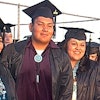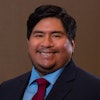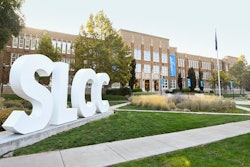Tribal Colleges Praise New Funds for Teacher Training
BILLINGS, Mont. — One thousand new American Indian teachers will be trained over the next five years, thanks to a $10 million congressional appropriation, the American Indian College Fund announced late last month.
The money will create the American Indian Corps of Teachers, part of President Clinton’s initiative to train 100,000 more teachers across the country.
The move was good news for tribal colleges here in Montana. “It’s exciting,” says Dr. Janine Pease Pretty on Top, president of Little Big Horn College at Crow Agency. “It will make a huge difference.”
There is a great need for more teachers generally and for more American Indian teachers in particular, Pretty on Top says. Of the more than 2 million elementary and secondary teachers in the United States, only about 18,000 are American Indian.
Native American students have some of the highest high school dropout rates. An estimated 36 percent to 50 percent of American Indian students do not finish school. Studies show that American Indian children do better in school when they have American Indian teachers, Pretty on Top says.
A recent survey conducted by her college found that only about two dozen Indian students now are enrolled in teacher-education programs in the state, although 58 schools in Montana have substantial American Indian enrollments.
The new money will be a welcome shot in the arm for current teacher programs. Little Big Horn College has a cooperative agreement with Montana State University-Billings under which students receive the first part of their education at Crow Agency and then transfer to the Billings campus to finish teaching degrees.
Some of the six other tribal colleges around the state also have arrangements with four-year colleges to train teachers. Fort Peck Community College works with Montana State University-Billings, Rocky Mountain College and Montana State University-Northern. Donna Buckles-Whitmer, Fort Peck distance learning coordinator, says her college also would apply for the recently announced funds.
Training more teachers to teach at local schools is a primary goal of the Fort Peck program. Of the 225 teaching positions in the reservation’s five school districts, American Indian teachers fill only 33.
The appropriation is one of the largest public grants for teacher training in recent years, Pretty On Top says. During the late 1960s and early 1970s, the War on Poverty program earmarked money for teachers and increased the number of minority teachers. Many of those teachers now are ready to retire, creating a need for new teachers.
Tribal colleges with education programs will have to apply for the funds. Although specifics of the program have not been announced, 500 American Indian teacher candidates could each receive $10,000 in scholarships a year, and 10 to 20 teacher-training programs could each be awarded $25,000 or more in direct support.
© Copyright 2005 by DiverseEducation.com





















